GSMArena smartphone shopping guide: June 2014
June 2014
€100-€200
This is officially the era of the "good enough" smartphone - a sub-€200 phone can handle all your daily needs, leaving more expensive gadgets for the more tech inclined. Bang for the buck is valued more than any individual feature (individual disadvantages too).
Sony recently released the Xperia E1, but we still like the older Xperia M better. Both phones come in single and dual-SIM versions and have 4" WVGA screens, but the Xperia M wins in two important segments - camera and chipset - while costing virtually the same.
It has a dual-core Krait chipset with 1GB RAM and Adreno 305 versus a dual-core Cortex-A7 with 512MB RAM and Adreno 302. The camera is a 5MP / 720p shooter compared to the entry-level 3MP / WVGA camera of the Xperia E1, there's a front-facing camera to boot.
The one advantage the Xperia E1 holds over the M is that it's newer by half a year, meaning it's likely to get one more software update. However, at this point phones are running Android 4.3 Jelly Bean.
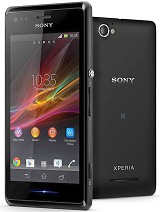 Sony Xperia M |
Pros | Cons |
|
|
|
| Review | ||
Now under Lenovo management, Motorola is trying to replicate Moto G's success at the €200 price point closer to €100 with the Moto E. It has a slightly bigger, slightly sharper screen than the Xperia E1 - 4.3" qHD unit (so it's 256ppi over 233ppi for the Xperia). It's guarded by Gorilla Glass to boot.
The phone is powered by the same chipset, but Motorola's close association (until recently) with Google means the Moto E runs Android 4.4 KitKat, plus you get 1GB of RAM. The camera is also better - a 5MP snapper that records FWVGA (a small difference in resolution but fits 16:9 screens better). The Motorola Moto E has a dual-SIM version as well.
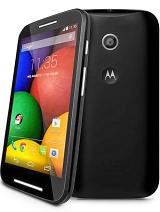 Motorola Moto E |
Pros | Cons |
|
||
| Review | ||
The Nokia Lumia 630 is not a direct successor to the Lumia 520, but the two aim for the same price segment. This is the first Windows Phone handset with a dual-SIM option, so if you felt locked in Android because you needed dual-SIM now is your time to jump ship.
It has a relatively big screen, 4.5" IPS LCD, with relatively low resolution, FWVGA (that's 480 x 854). Still, Nokia's ClearBlack tech improves sunlight legibility and Gorilla Glass 3 will ward off scratches.
The Lumia 630 runs Windows Phone 8.1 on a quad-core processor (1.2GHz) but with only 512MB RAM. Still, like the 520 before it, the Lumia 630 will generally run faster than similarly priced Androids. It also has a better camera - a 5MP shooter with 720p video. And don't forget about the free offline navigation, this one for all countries Drive+ has maps for.
 Nokia Lumia 630 |
Pros | Cons |
|
|
|
| Review | ||
Next up, a relatively unknown phone in the face of ZTE Grand S Flex. It has a 5" 720p IPS screen with near Retina sharpness. It also packs an 8MP camera with 1080p video, the cheapest FullHD shooter. It's also the cheapest LTE-enabled device in this guide and has a good 2,300mAh battery. The Grand S Flex is no speed freak with a dual-core Krait at 1.2GHz and it runs an aging Android 4.1 Jelly Bean.
The ZTE Grand S Flex can give you a taste of an old flagship for little more than the Moto E costs. It might be hard to find though, as we said it's a relatively unknown device. And if you do find a unit, you only get 16GB storage and there's no microSD card slot.
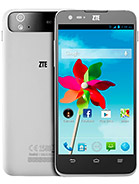 ZTE Grand S Flex |
Pros | Cons |
|
|
|
The Acer Liquid E2 Duo has been around for over a year and we've recommended it in past installments. Now it's perhaps even more relevant as it is a direct competitor to the Lumia 630.
It has a dual-SIM version and bests the Nokia entry-level device on several counts - the 4.5" IPS screen is sharper (qHD resolution), it has an 8MP / 1080p camera, stereo speakers and 1GB of RAM. It's powered by a similar chipset too, except made by MediaTek and running a relatively old OS version, Android 4.2 Jelly Bean.
Of course, Acer may not get around to releasing further software updates for this one but the camera upgrade is fairly significant.
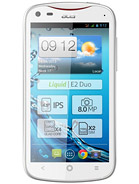 Acer Liquid E2 |
Pros | Cons |
|
|
|
If dual-SIM isn't a priority and the ZTE doesn't do it for you, the LG Optimus L9 II is a solid alternative. It has a slightly smaller 4.7" IPS screen with 720p resolution and a similar 8MP / 1080p camera. The runs a current Android 4.4.2 KitKat on a slightly faster chipset with a dual-core Krait CPU.
The Optimus L9 II lacks LTE, which might or might not matter, but the connectivity feature set boasts NFC and an IR blaster to control tech at home. Plus, it has a microSD card slot so storage shouldn't be an issue.
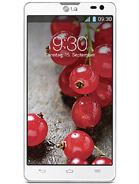 LG Optimus L9 II |
Pros | Cons |
|
||
And if dual-SIM is a priority as is a big screen, then the Sony Xperia C offers a 5" qHD screen (with an average 220ppi pixel density) and two microSIM slots. It's powered by a quad-core Cortex-A7 processor running the relatively old Android 4.2 Jelly Bean.
The Xperia C has well-liked Sony looks and an 8MP / 1080p camera.
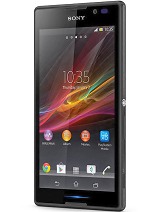 Sony Xperia C |
Pros | Cons |
|
|
|
| Review | ||
We promised to revisit the Moto G and here it is - Motorola recently released the Moto G 4G, an LTE-enabled version of its highly intereting mid-ranger. Better still, it has a microSD card slot, which was one of the more common complaints.
You still get the goods - a sharp 4.5" 720p IPS screen with Gorilla Glass 2, a zippy quad-core Cortex-A7 processor, current Android version (4.4.2) and a 5MP / 20p camera.
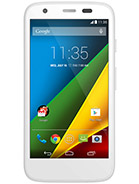 Motorola Moto G 4G |
Pros | Cons |
|
||
We've recommended the Sony Xperia SP in the past as an alternative to the Moto X, but it has come down in price noticeably. It has a 4.6" 720p screen with Gorilla Glass and is powered by a dual-core Krait processor, but it's paired with a powerful Adreno 320 GPU - the phones above typically use Adreno 305, an old PowerVR SGX or worse.
Anyway, the Xperia SP runs Android 4.3 Jelly Bean an update to 4.4 KitKat is in the works. It has an 8MP 1080p camera and LTE connectivity.
 Sony Xperia SP |
Pros | Cons |
|
|
|
| Review | ||
Reader comments
- Weeks
- 21 Jun 2022
- r3b
I pick iPhone 10
- radosuaf
- 20 Aug 2014
- 0ZR
Thanks for a GREAT article! I will be buying LG 2 mini - would like to have an HTC, but there's simply nothing in that price bracket from them worth looking at.
- AnonD-285888
- 21 Jul 2014
- qQJ
This list just confirms what I have known for six-seven months. I picked up a LG Optimus G on contract for $49. Until I dropped it (rare), it was the best phone I have owned. It's fast, powerful, will run anything, take 1080p vide o, take hig...